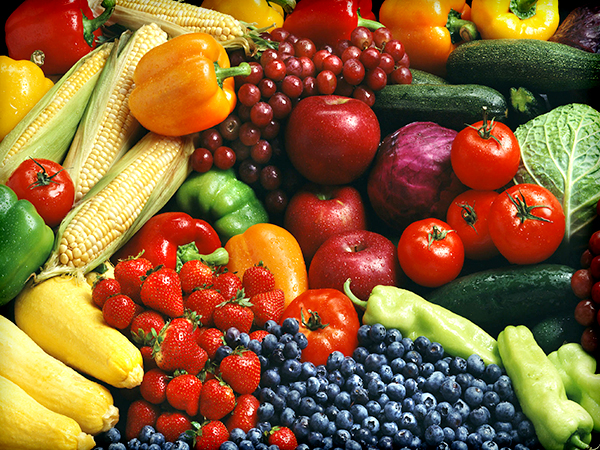The farm-to-table movement is a growing trend in the food industry, with more and more restaurants and consumers embracing the benefits of eating food that is sourced from local farms. Farm-to-table food is typically fresher, more nutritious, and more flavorful than food that is shipped long distances. It also supports local farmers and businesses, and can help to reduce the environmental impact of food production.
Case Studies of Successful Farm-to-Table Models
The Farm-to-Table Movement in Action
Many restaurants are successfully implementing the farm-to-table model, offering diners fresh, seasonal, and locally sourced food. One such restaurant is The French Laundry in Yountville, California. The restaurant has its own garden, where it grows many of the ingredients used in its dishes. The French Laundry also works with local farmers to source the freshest and highest quality ingredients.Another successful farm-to-table restaurant is Blue Hill at Stone Barns in Pocantico Hills, New York. The restaurant is located on a working farm, and the menu changes daily based on what is harvested from the farm. Blue Hill at Stone Barns is known for its innovative and delicious dishes, which showcase the bounty of the Hudson Valley.
| Restaurant | Location | Focus |
|---|---|---|
| The French Laundry | Yountville, California | Seasonal, locally sourced ingredients |
| Blue Hill at Stone Barns | Pocantico Hills, New York | Farm-to-table cuisine |
Benefits of the Farm-to-Table Model
The farm-to-table model offers a number of benefits for restaurants, farmers, and consumers. For restaurants, the farm-to-table model can help to reduce food costs, improve the quality of food, and attract customers who are interested in eating locally sourced food. For farmers, the farm-to-table model can provide a stable market for their products and help them to get a fair price for their food. For consumers, the farm-to-table model offers the opportunity to eat fresh, seasonal, and locally sourced food.
- Reduces food costs for restaurants
- Improves the quality of food
- Attracts customers who are interested in eating locally sourced food
- Provides a stable market for farmers
- Helps farmers get a fair price for their food
- Offers consumers the opportunity to eat fresh, seasonal, and locally sourced food

Farm-to-Table Trends in Fine Dining
Farm-to-Table Cuisine: A Growing Trend
Farm-to-table cuisine is a growing trend in fine dining, as more and more restaurants are sourcing their ingredients from local farms. This trend is being driven by a number of factors, including the increasing demand for fresh, seasonal, and locally sourced food, as well as the growing awareness of the environmental benefits of eating locally.Farm-to-table cuisine offers a number of benefits for both restaurants and diners. For restaurants, farm-to-table cuisine can help to reduce food costs, improve the quality of food, and attract customers who are interested in eating locally sourced food. For diners, farm-to-table cuisine offers the opportunity to eat fresh, seasonal, and locally sourced food that is often more flavorful and nutritious than food that is shipped long distances.
| Benefit | For Restaurants | For Diners |
|---|---|---|
| Reduced food costs | ✔ | |
| Improved quality of food | ✔ | ✔ |
| Attracts customers who are interested in eating locally sourced food | ✔ | |
| Offers the opportunity to eat fresh, seasonal, and locally sourced food | ✔ |
Benefits of Farm-to-Table Cuisine
There are many benefits to eating farm-to-table cuisine, including:
- Freshness: Farm-to-table cuisine is made with fresh, seasonal ingredients that are picked at the peak of ripeness. This results in food that is more flavorful and nutritious than food that is shipped long distances.
- Quality: Farm-to-table cuisine is made with high-quality ingredients that are grown without the use of pesticides or herbicides. This results in food that is healthier and more flavorful than food that is grown using conventional methods.
- Sustainability: Farm-to-table cuisine is more sustainable than conventional cuisine because it reduces the amount of food that is shipped long distances. This helps to reduce greenhouse gas emissions and conserve energy.
Learn more about the farm-to-table concept
How to Find Farm-to-Table Restaurants
There are a number of ways to find farm-to-table restaurants in your area. You can:
- Ask your friends and family for recommendations.
- Search online for farm-to-table restaurants in your area.
- Look for restaurants that have a farm-to-table menu or that are certified by a farm-to-table organization.
Read our tips for marketing your farm-to-table restaurant

The Role of Chefs in the Farm-to-Table Movement
Chefs as Advocates for Local Food
Chefs play a vital role in the farm-to-table movement by using their culinary skills to showcase the bounty of local farms. By creating dishes that highlight the flavors of fresh, seasonal ingredients, chefs can educate diners about the benefits of eating locally and encourage them to support local farmers.Many chefs are also actively involved in building relationships with local farmers and food producers. They visit farms to learn about the growing practices and to select the best ingredients for their dishes. Chefs also work with farmers to develop new products and to find ways to use seasonal ingredients in creative and delicious ways.
| Chef | Restaurant | Location |
|---|---|---|
| Alice Waters | Chez Panisse | Berkeley, California |
| Dan Barber | Blue Hill at Stone Barns | Pocantico Hills, New York |
| René Redzepi | Noma | Copenhagen, Denmark |
Chefs as Innovators
Chefs are also innovators in the farm-to-table movement. They are constantly experimenting with new ways to use local ingredients and to create dishes that are both delicious and sustainable. For example, some chefs are using fermentation and other traditional preservation techniques to extend the shelf life of seasonal ingredients. Others are working with farmers to develop new varieties of crops that are better suited to the local climate and soil conditions.
- Farm-to-Table Baking and Desserts
- The Role of Seafood in Farm-to-Table
- Menu Planning in Farm-to-Table Cuisine
By using their culinary skills and creativity, chefs are helping to make the farm-to-table movement more accessible and appealing to a wider range of diners. They are also playing a vital role in developing new and sustainable ways to produce and consume food.

The Impact of Farm-to-Table on Local Economies
Creates Jobs and Economic Growth
The farm-to-table movement creates jobs and economic growth in local communities. When restaurants source their ingredients from local farms, they are supporting local businesses and creating jobs for farmers, food processors, and other workers in the local food system.
For example, a study by the University of California, Berkeley found that the farm-to-table movement created over 10,000 jobs in California in 2012. These jobs were in a variety of sectors, including farming, food processing, and transportation.
| Sector | Number of Jobs Created |
|---|---|
| Farming | 4,000 |
| Food processing | 3,000 |
| Transportation | 2,000 |
Boosts Tourism
The farm-to-table movement can also boost tourism in local communities. When people travel to a region to experience its local food, they often visit farms, farmers markets, and restaurants that are part of the farm-to-table movement. This can help to generate revenue for local businesses and create jobs in the tourism sector.
For example, the town of Asheville, North Carolina has become a popular tourist destination for its thriving farm-to-table scene. Visitors to Asheville can enjoy farm-to-table meals at a variety of restaurants, visit local farms, and attend farmers markets.
Preserves Local Culture and Heritage
The farm-to-table movement can also help to preserve local culture and heritage. When people eat food that is grown and produced in their local community, they are connecting with the land and the people who work it. This can help to strengthen community ties and foster a sense of place.
For example, the Navajo Nation in the southwestern United States has a long tradition of farming and eating traditional foods. The Navajo people have developed a number of unique dishes that are made with local ingredients, such as corn, beans, and squash. These dishes are an important part of Navajo culture and heritage.

Final Thought
The farm-to-table movement is a positive trend that is having a positive impact on the food industry and the environment. By eating farm-to-table food, consumers can enjoy fresher, more nutritious, and more flavorful food while supporting local farmers and businesses. Chefs play a vital role in the farm-to-table movement by creating innovative and delicious dishes that showcase the bounty of local farms.
As the farm-to-table movement continues to grow, we can expect to see even more benefits for consumers, farmers, and the environment. So next time you’re looking for a delicious and healthy meal, consider choosing a restaurant that sources its ingredients from local farms.




